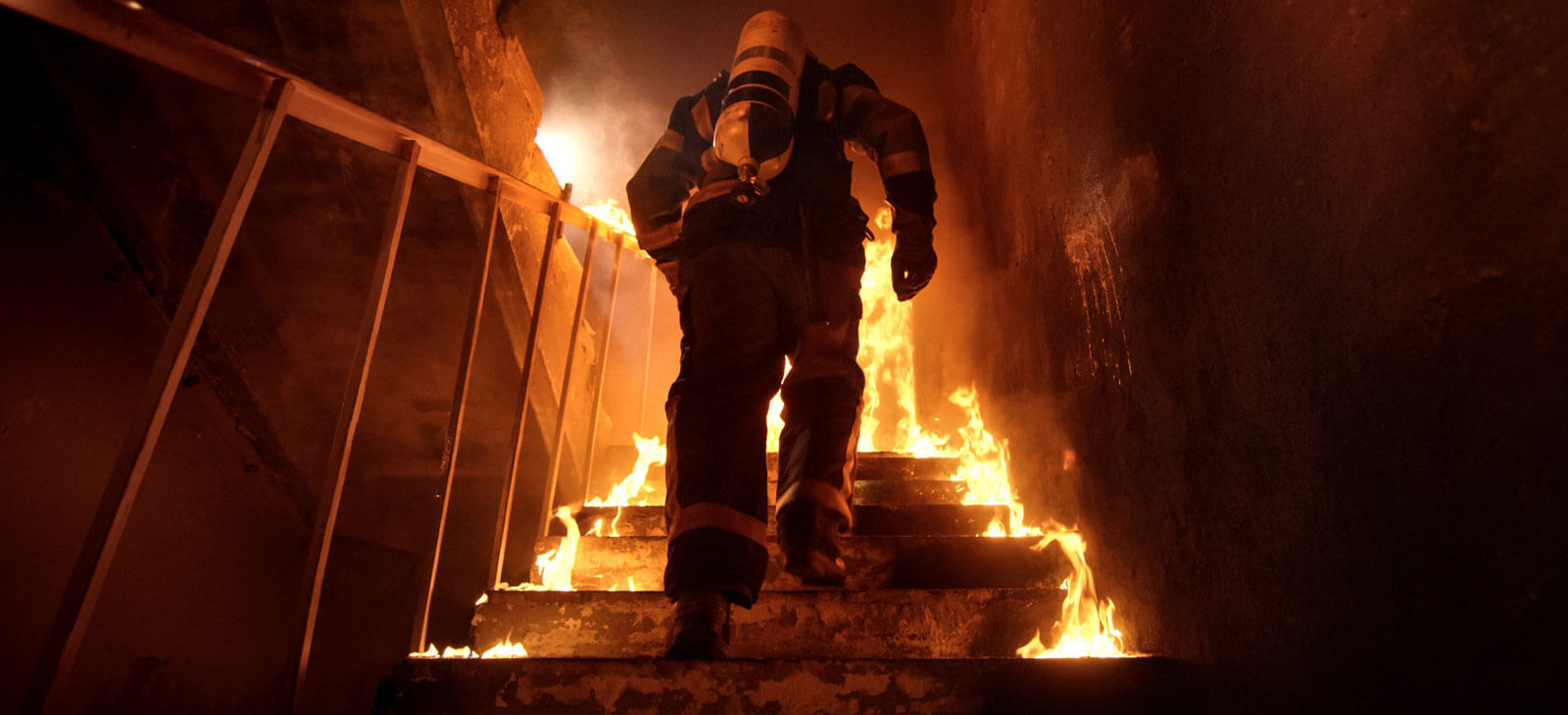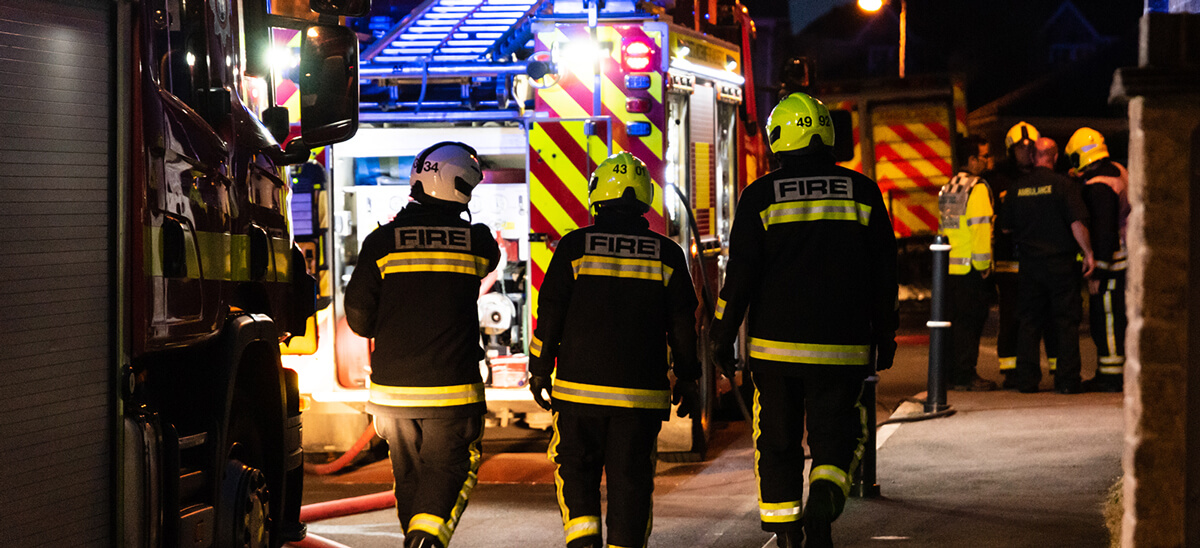Finding the link between firefighters and cancer is vital in protecting our emergency service personnel.
In June 2023, the Fire Brigades Union (FBU) announced that nearly 300 firefighters would be participating in new national health monitoring research for firefighters. The firefighters will provide blood and urine samples to be analysed for biomarkers of cancers and other diseases, as well as toxic chemicals. The results will be used to detect cancers and other diseases at the early stages. The monitoring will further identify evidence linking occupational cancers with exposure to toxic fire chemicals, thus demonstrating a correlation between firefighters and cancer.
At present, despite the recent published research showing that the rate of cancer among UK firefighters aged 35-39 is up to 323% higher than in the general population in the same age category, firefighters are not provided with any regular health monitoring.
Over the past five years, there have been several studies and developments confirming what those in the profession have known for decades, that firefighters face a significant increase in occupational disease as a result of doing their job. In 2019, the then Chief Fire Officer Chris Davies QFSM2 acknowledged the high rate of cancer among members of the profession.
“There is a lot of scientific and medical information out there but all of it, that I’m aware of, states that you can’t prove or disprove a link to cancer.”
“What I do acknowledge is firefighters are contracting certain types of cancer above the population norm, I accept that and that is a concern.”
Firefighters and Cancer – Post 2019 Research
Since Mr Davies’ statement, the International Agency for Research on Cancer (IARC) (the specialised cancer agency for the World Health Organization (WHO) declared there was sufficient evidence for occupational exposure as a firefighter to be classified as a carcinogenic to humans (Group 1) on the basis of sufficient evidence for mesothelioma and bladder cancer.
In addition, the IARC found here was limited evidence for cancer from exposure as a firefighter for the following cancer types: colon cancer, prostate cancer, testicular cancer, melanoma of the skin, and non-Hodgkin lymphoma. There was also strong mechanistic evidence that occupational exposure as a firefighter exhibits five of the ten key characteristics (KCs) of carcinogens: “[it] is genotoxic” (KC2), “induces epigenetic alterations” (KC4), “induces oxidative stress” (KC5), “induces chronic inflammation” (KC6), and “modulates receptor-mediated effects” (KC8).
The latest research, published in the January 2023 edition of the Scientific Reports section of the Nature Journal, concluded that
- Firefighters who had served more than 15 years were 1.7 times more likely to develop cancer than those who had served less time.
- Firefighters were at least twice as likely to be diagnosed with cancer if they noticed soot in their nose/throat (odds ratio (OR) = 2.0, 1.1–3.5), or remained in their PPE for more than four hours after attending a fire incident (OR = 2.3, 1.1–5.2).
- Other factors associated with an increased likelihood of cancer were:
- eating while wearing PPE (OR = 1.8, 1.2–2.7);
- failing to store clean/dirty PPE separately (OR = 1.3, 1.0–1.7);
- working in a station that smells of fire (OR = 1.3, 1.0–1.8) or not having designated (separated) clean and dirty areas (OR = 1.4, 1.1–1.7);
- using an on-site washing machine to launder fire hoods (OR = 1.3, 1.0–1.7);
- feeling that cleaning is not taken seriously at work (OR = 1.5, 1.2–2.0).
Those undertaking the study pointed out that up until this point, most research concerning firefighters’ chronic exposure to contaminants has been done on US firefighters. The lack of UK-centric research has resulted in the Industrial Injuries Advisory Council (IIAC) not recommending cancer (with the exception of mesothelioma) as a prescriptive disease in firefighters. This has negatively impacted on firefighters’ access to workplace compensation. Contrast this with North America, where presumptive legislation protects firefighters’ right to compensation for several types of cancers and other chronic illnesses.
The researchers also concluded:
“A lack of research concerning UK firefighters’ occupational health also poses challenges for the effective implementation of preventative measures, i.e., measures which would limit chronic exposure to harmful contaminants in the first instance. Without an established baseline, it is difficult to implement or quantify the effectiveness of such preventative measures. Similarly, for UK Fire and Rescue Services (FRSs) required to operate under increasingly strained resources, a lack of current research makes it difficult to prioritise such measures in a resource-efficient manner.”
Can PPE help protect against exposure to fire toxins?
The 2023 research also confirmed that after attending a fire incident, PPE worn by firefighters may be heavily contaminated with elements of fire smoke. It was also found that:
“…firefighters who remain in PPE for more than four hours after attending a fire are over twice as likely to develop cancer than those who remain in PPE for 30 min or less after an incident (OR = 2.3, 1.1–5.2). If not effectively removed, contaminants will remain on PPE where they can continue to accumulate, posing a long-term exposure risk. Removing contaminants from PPE and firefighters’ skin (e.g., through washing after an incident) as soon as possible is therefore vital for reducing both acute and chronic dermal exposure.”
One way of significantly reducing the amount of contaminated fire smoke particles reaching the skin is to wear a protective specifically designed to block carcinogens and control against heat stress2. This type of protection also increases the quality of life of firefighters, as it prevents smoke odour permeating off the skin in the days following extensive exposure, a situation that can cause embarrassment at the gym and distress to family members.
Firefighters and Cancer
The new research leaves no doubt as to the connection between certain types of cancers and the firefighting occupation. It is imperative that the UK Government examine the evidence as the conclusions of its last published report are now out of date. In addition, the IIAC needs to revise its policies in light of the new findings and recommend a prescription for cancer for current and retired firefighters.
To discuss any points made in this article, please call the Enduro Protect team on 01235 814112.
1 Mr Davies announced his retirement on 7 August 2023 – A fond farewell from Chief Fire Officer Chris Davies QFSM (mawwfire.gov.uk)
2 When attending a fire, firefighters’ skin is 400% more absorbent due to heat and sweat.











